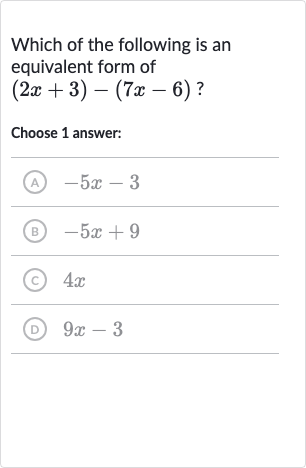Full solution
Q. Which of the following is an equivalent form of Choose answer:(A) (B) (C) (D)
- Distribute negative sign: Subtract the second expression from the first expression by distributing the negative sign across the second expression. This means we change the sign of each term inside the parentheses that is being subtracted.
- Combine like terms: Combine like terms by adding or subtracting the coefficients of the terms and the constant terms separately.
- Check result: Check the result to ensure that all like terms have been combined correctly and that no arithmetic errors have been made. is the simplified form of the original expression, and there are no further simplifications possible.
More problems from Identify equivalent linear expressions I
QuestionGet tutor help

